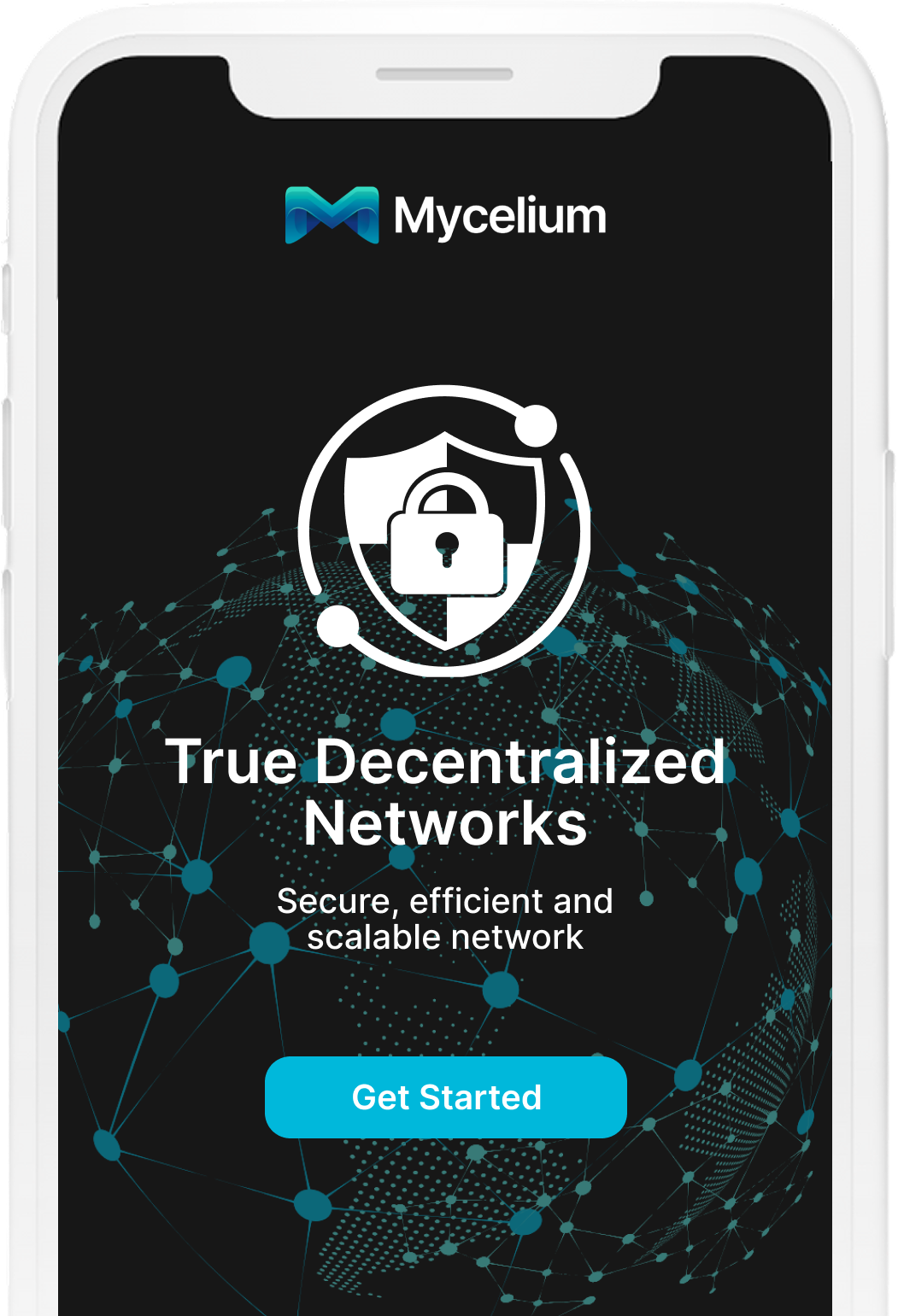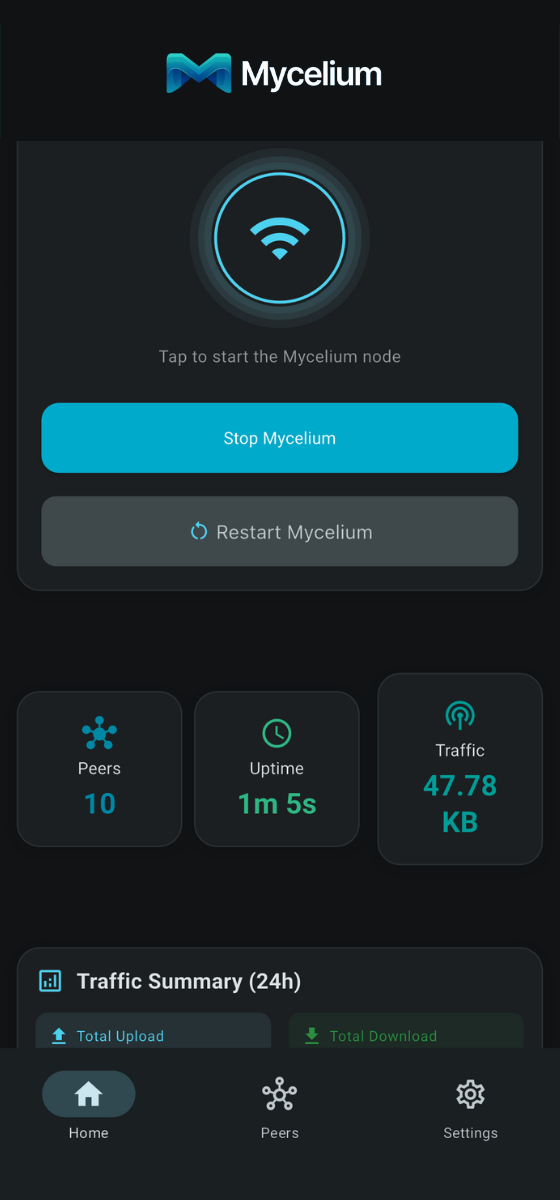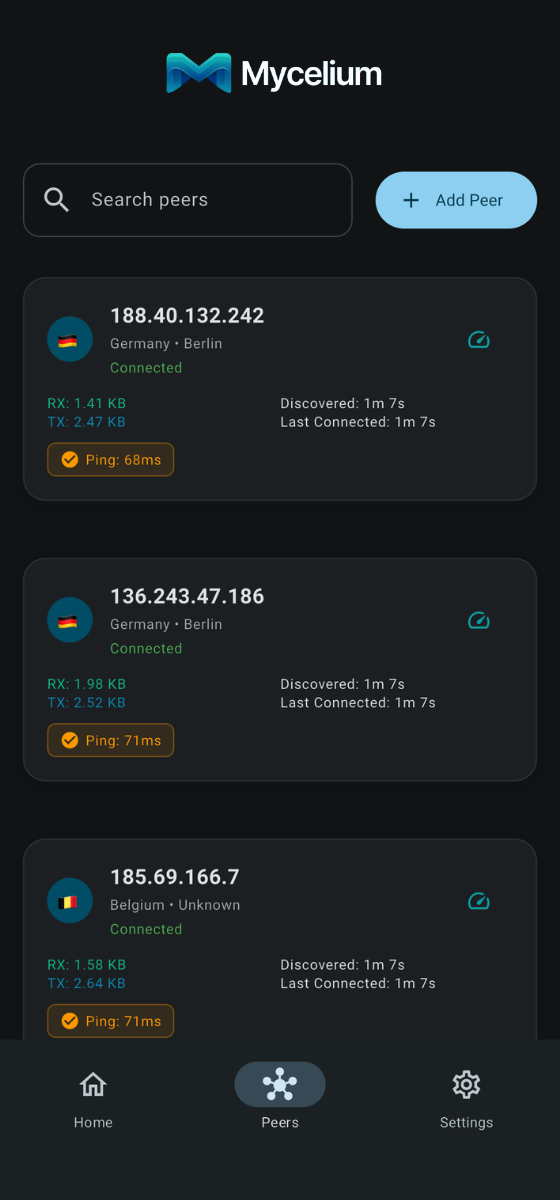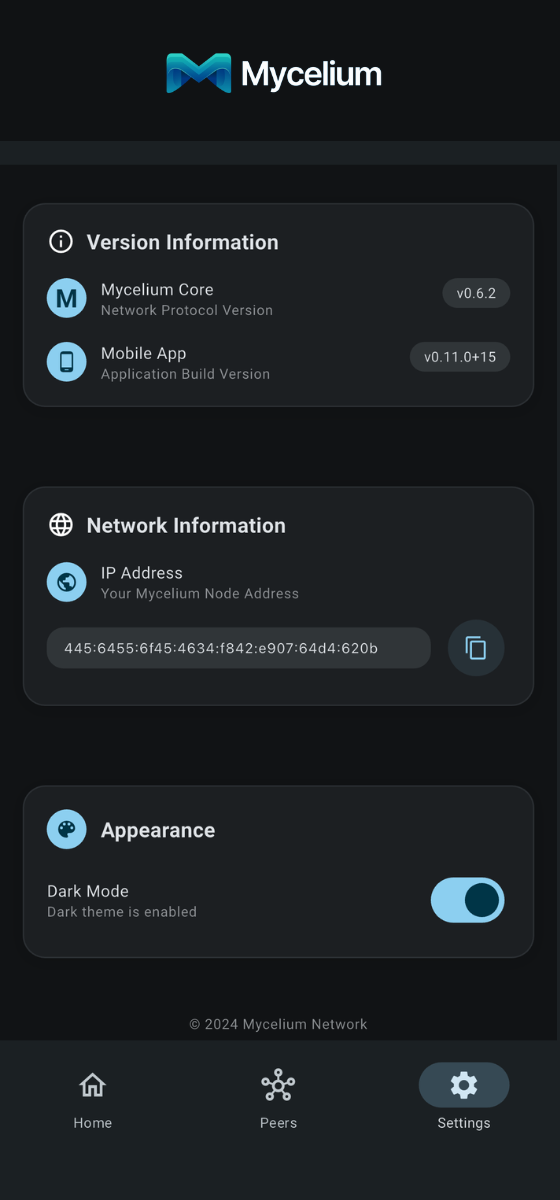Mycelium
Unleashing the Power of Decentralized Networks
Discover Mycelium, an end-to-end encrypted IPv6 overlay network. The future of secure, efficient, and scalable networking.
Coming Soon: New Decentralized Features

Our Mission
Discover Mycelium
Mycelium is an unbreakable network, always finding the shortest path and providing 100% secure, peer-to-peer communication. But this is just the beginning.
Our mission is to create a sustainable digital ecosystem where communication is seamless, data is secure, and scalability knows no bounds.
Core Components
Network Capabilities
Built for resilience and autonomy, the Mycelium Network dynamically connects nodes through intelligent routing, proxy discovery, and decentralized delivery.
Each component — from message passing to content distribution — works in harmony to create a fully self-healing, self-optimizing data mesh.
Routing
Automatic pathfinding
The Mycelium Network automatically discovers the shortest and fastest routes between nodes, ensuring optimal data flow and network efficiency without manual configuration.
Communication
Distributed message bus
Acts as a global message layer that lets nodes exchange information seamlessly. Enables resilient, asynchronous communication across the entire decentralized mesh.
Discovery
Automatic proxy detection
The system continuously scans for open SOCKS5 proxies within the network, making it effortless to find available connection points without manual setup.
Connectivity
Seamless proxy forwarding
Local SOCKS5 connections can be forwarded through nearby nodes or remote proxies. When browsers use the local proxy, traffic moves securely through the mesh—like a built-in VPN.
Delivery
Decentralized content distribution
Mycelium can serve data from distributed 0-DBs, creating a CDN-like layer that delivers content faster and more reliably—without relying on centralized servers.
How It Works
How Mycelium Operates
Mycelium, like its natural namesake, thrives on decentralization, efficiency, and security, making it a truly powerful force in the world of decentralized networks.
Roadmap
Coming Soon: The Future of Mycelium
Mycelium is evolving to bring even more powerful decentralized features, designed to enhance your experience and expand possibilities. Be the first to explore what's coming next by staying connected with our latest updates.
Quantum Safe Storage Functionality
Mycelium's quantum safe storage enables flexible, scalable, and efficient data distribution across a decentralized network, ensuring redundancy and security.
Entry and Exit Points for AI Workloads
Seamlessly connect AI applications to Mycelium, providing optimized and secured data pipelines for training, inference, and real-time processing.
Data Storage and Retrieval Mechanisms
Users can choose between storing data locally for quick access or utilizing the distributed grid for enhanced scalability and resilience.
Integrated Name Services (DNS)
The Integrated DNS system efficiently finds the shortest path between users and websites, automatically balancing loads and identifying alternative routes in case of internet issues.
Frontend/Backend Integration
Mycelium provides seamless integration with existing applications, enabling developers to leverage decentralized storage across both frontend and backend architectures.
CDN (Content Delivery Network)
Mycelium accelerates data distribution by acting as a decentralized CDN, ensuring fast, secure, and efficient content delivery across global nodes with minimal latency.
Frequently asked questions
If you have anything else you want to ask, reach out to us.
What is Mycelium?
Mycelium is an end-to-end encrypted IPv6 overlay network written in Rust. Each node joining the network receives an IP in the 400::/7 range, facilitating secure and private communications.
Is Mycelium ready to scale to the world?
No, Mycelium is not yet fully scalable to a global level. Currently, each network can support around 100,000 users, but multiple networks can be deployed to expand capacity.
How do I install Mycelium?
The Mycelium app supports iOS, macOS, Android and Windows. For Linux, a binary is available. Installation guides are available for both local machines and virtual machines running on the TFGrid. Note that Windows users need to have wintun.dll in the same directory as the Mycelium executable.
How can I find and use my Mycelium address?
Upon using the Mycelium app, you're assigned a unique Mycelium address. To copy this address, click the button located to the right of the displayed address in the app interface.
Can I deploy workloads on the TFGrid using Mycelium?
Yes, after installing Mycelium, you can deploy workloads on the TFGrid and connect to them using the Mycelium network. Detailed deployment guides are available in the documentation.
Is there an API available for Mycelium?
Yes, Mycelium offers an API for administrative operations, peer management, and message subsystem operations. Comprehensive API documentation can be found in the official Mycelium GitHub repository.
What should I do if I encounter issues during installation or usage?
If you face any challenges, refer to the troubleshooting section in the Mycelium documentation. Additionally, ensure that all prerequisites are met, such as having wintun.dll in the correct directory for Windows installations.
How does Mycelium handle routing within its network?
Mycelium incorporates core principles of the Babel routing protocol, enabling efficient and dynamic routing within its encrypted IPv6 overlay network.



